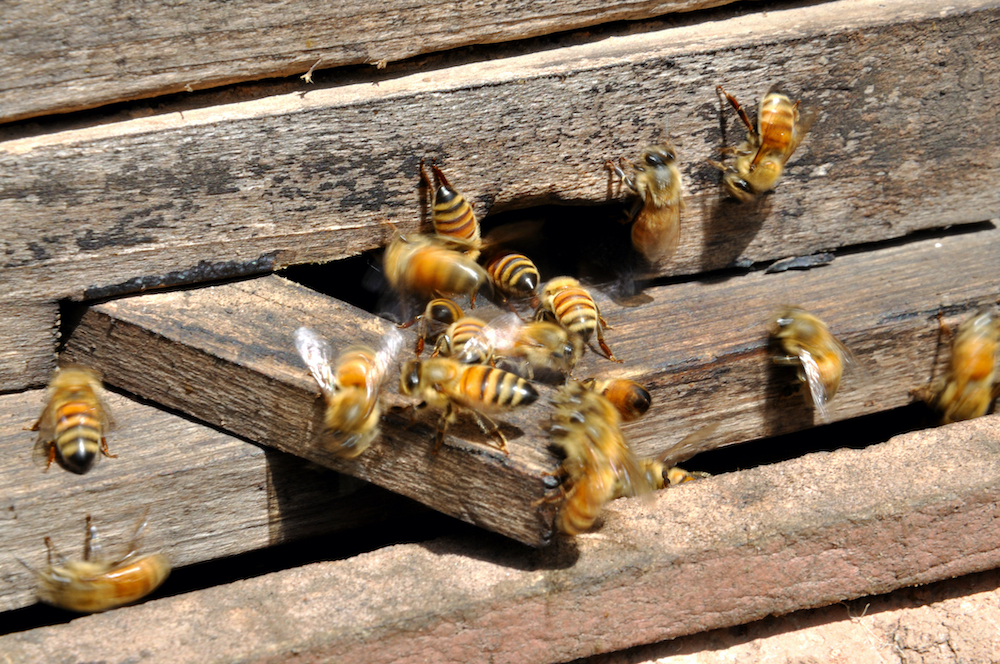Bees 101: Learn the Basics About Bees


How much do you know about bees? If your answer was “not much,” this is the article for you. We will cover bee anatomy, behavior and life cycle as well as share some facts about conservation. By the end of this article, you will become the bee expert you’ve always wanted to be… or at least you will know more than you did 5 minutes ago!
Bee Anatomy
There are three main parts to a bee’s body: head, thorax and abdomen.
The head contains two antennae that act as receptors to gather information about the environment. They detect chemicals and light as well as movement, vibration and pheromones.
The thorax can be found at the center of a bee’s body. The thorax section of the bee is responsible for its ability to walk, grip and fly. The wings and legs can be found here. A bee has 2 sets of wings for a total of 4 wings. Although the fore wings are larger than the back wings, they work together to allow the bee to fly fast and gracefully. Bees also have 3 pairs of legs for a total of 6 legs. On one of the back legs, there is a structure called the pollen basket that is used by foragers to carry pollen back to the hive.
Female worker bees have stingers that they will use when they feel threatened. When they insert their stinger into the skin, small barbs on the stinger will insure that it stays inserted and deposits bee venom. Unfortunately, the barbs cause the singer to get stuck in the skin and tear from the body of the bee, killing it. Male bees called drones do not have stingers.
Bees can come in a wide variety of colors and sizes. Although we primarily think of bees as yellow and black striped insects, bees can be black, green, red, striped or solid. Carpenter and bumble bees are two of the larger bee species, while others can be just millimeters long.
Did you know that there are over 20,000 documented species of bees around the world?
Bee Life Cycle
Like many insects, bees go through a cycle of egg, larva and pupa before they emerge as adult bees. In the honey bee species, for example, the queen will lay thousands of eggs per day inside the cells of the hive. Here, the eggs will spend several days developing with the care of the nurse bees. Once they reach the adult stage, they will emerge from their cells and begin to take on some of the roles of the worker bees.
Most worker bees can live for five to seven weeks depending on their job and when they were born. Drones, on the other hand, will die immediately after mating with the queen. If they do not have the opportunity to mate with the queen, they will get kicked out of the hive as the winter nears. A queen bee can live a relatively long time compared to the other bees in the colony, with an average lifespan of two to five years.
Other bee species such as bumble bees live shorter life spans, with a queen living for about one year and workers for about four weeks. Some species of solitary bees can also live up to 12 months.
Conservation
Honey bee populations have been in decline in the past few decades. Colony collapse disorder, destruction of habitat, pesticides and disease are some of the primary contributors to the decrease in the number of honey bees. However, honey bees are not the only ones who have experienced decline.
Pollinators such as bees must be protected. Without pollinators moving pollen from flower to flower, plants would not be able to reproduce as freely, resulting in fewer fruits and seeds used to fill our dinner plates. It is critical that we continue to choose safe and humane farming and removal practices to continue to protect bees in the environment.
You can do your part by choosing live bee removal services and avoiding the use of chemicals or insecticides to treat a beehive or swarm. You can also include bee-friendly plants in your garden to attract more bees. Plus, you can include a water source to help attract even more bees and provide them with the water they need to keep the hive cool.
Live Bee Removal San Diego
Hopefully you’ve learned a little bit more about bee anatomy, behavior, lifecycle and conservation. If you have a bee hive or swarm on your San Diego property, do not wait until someone gets stung to call in the professionals. At D-Tek Live Bee Removal we have been serving San Diego area customers for over 15 years when they have a problematic beehive or swarm that is causing frustration or harm.
Call our office today to have one of our technicians dispatched immediately to your property. We provide excellent service, accurate quotes and peace of mind.
